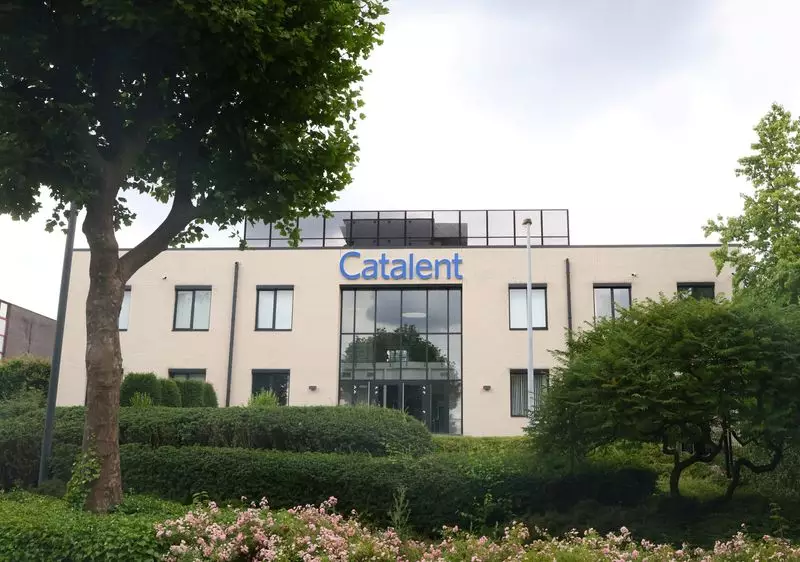In recent developments, the proposed acquisition of Catalent by Novo Holdings has elicited significant concern from various consumer advocacy groups and labor unions in the United States. With a staggering price tag of $16.5 billion, this acquisition raises critical questions regarding competition, particularly in the burgeoning markets of weight management drugs and innovative gene therapies. Organizations like the U.S. Public Interest Research Group (PIRG) and the Service Employees International Union (SEIU) have voiced their opposition to the merger, suggesting that it undermines market competition and may hinder the development of future pharmaceutical innovations.
Novo Holdings, the lead shareholder of Novo Nordisk—the pharmaceutical firm recognized for its successful GLP-1 drug Wegovy—has claimed that the acquisition would enhance the supply chain for this weight loss drug. However, consumer groups worry that this maneuver threatens the market position of current and future competitors. Companies such as Amgen, Pfizer, Roche, and AstraZeneca are reportedly developing their own GLP-1 products and could face significant challenges if the acquisition goes through.
The central concern articulated by these groups is that if Novo Holdings gains control of Catalent, it may restrict the access that these rival companies have to necessary manufacturing capabilities and expertise. This limitation could drastically reduce the competitive landscape, leading to fewer options and potentially higher prices for consumers. The assertion is that without adequate access to production resources, these companies may either slow down their development timelines or abandon these promising drugs altogether.
The Broader Impact on Gene Therapy Development
The implications of the acquisition extend beyond just weight loss medications. Advocacy groups have also highlighted concerns about the potential impact on gene therapies, which are critical in treating a myriad of diseases. Catalent holds existing contracts to manufacture gene therapies for companies like Sarepta Therapeutics and Novartis, raising alarms that ownership changes may inadvertently disrupt production and availability.
David Balto, an antitrust attorney representing the groups opposed to the acquisition, emphasized that the competitive implications are far-reaching, affecting not only existing drugs on the market but also the trajectory of future therapies. For instance, Sarepta’s Elevidys and Novartis’s Zolgensma are now at risk should the acquisition ultimately restrict Catalent’s capacity to manufacture vital therapies.
In countering the criticisms from consumer groups and labor unions, Novo Holdings has expressed confidence in the intended pro-competitive nature of the acquisition. The company claims that the merger will fortify Catalent’s operations, thereby enabling better patient outcomes and service delivery. A spokesperson from Catalent echoed this sentiment, asserting that the acquisition would enhance Catalent’s capabilities.
This divergence in perspectives reflects a classic conflict between corporate growth strategies and public interest. While Novo Holdings positions itself as a champion for improved access to medication, opponents caution that the concentration of power may lead to detrimental outcomes for competitive pricing and market diversity.
Senator Elizabeth Warren has been vociferous in her demand for the Federal Trade Commission (FTC) to thoroughly investigate the implications of this acquisition, highlighting the importance of maintaining competitive markets, especially in the pharmaceutical sector. With one of the largest pharmaceutical acquisitions set against a backdrop of public concern and potential regulatory roadblocks, the fate of this deal now hangs in the balance.
Novo Nordisk has indicated its commitment to cooperating with both the FTC and European Union regulators, suggesting that the deal might close by the end of the calendar year, provided it passes regulatory scrutiny. The strategy of selling off some factories to maintain compliance appears to be an effort to alleviate concerns over monopolistic practices. This maneuver demonstrates the complexities involved in balancing corporate ambitions with regulatory necessities and public welfare.
As the potential acquisition progresses through the regulatory landscape, it serves as a reminder of the intricate interplay between business intentions and societal needs. Consumer groups and labor unions stand firm in their positions, advocating for a future where healthy competition fuels innovation rather than corporate conglomeration stifles it. The outcome of this acquisition not only holds significance for the companies involved but also stands as a potential watershed moment for regulatory practices surrounding pharmaceutical mergers and acquisitions. The dialogue between these groups, alongside the FTC’s decisions, will undoubtedly shape the future of drug development and availability.

